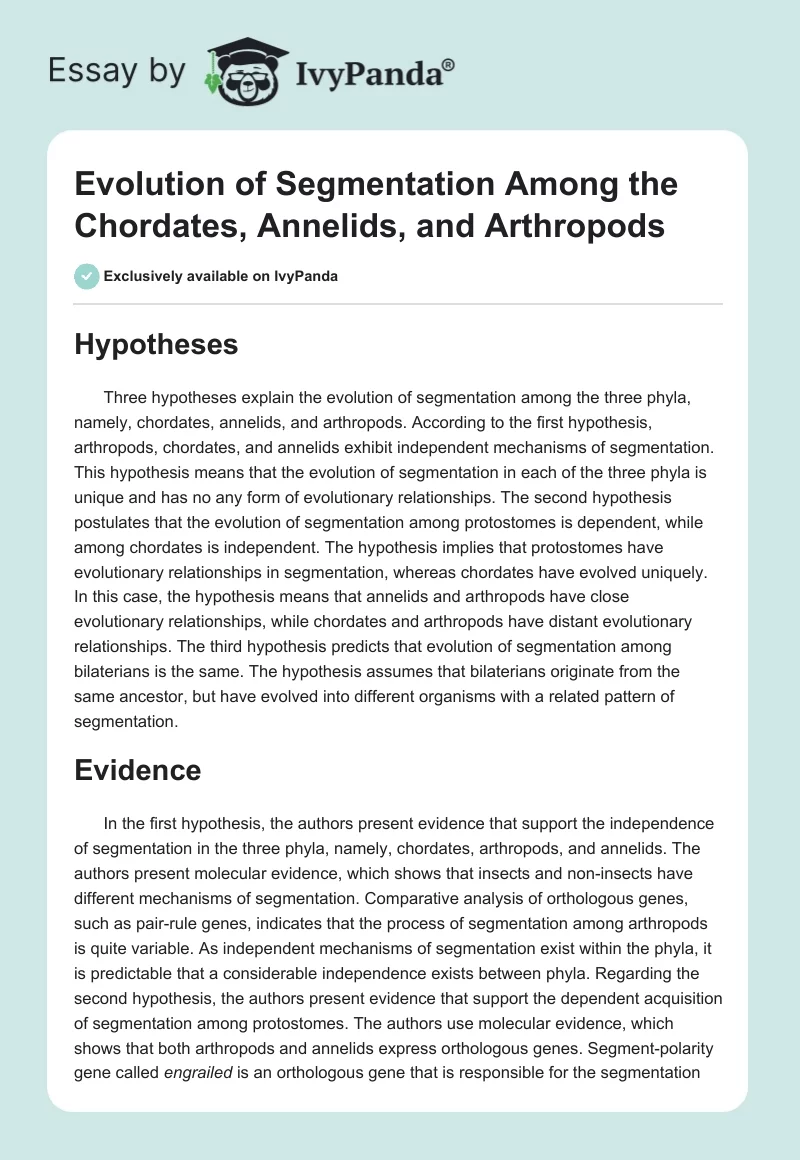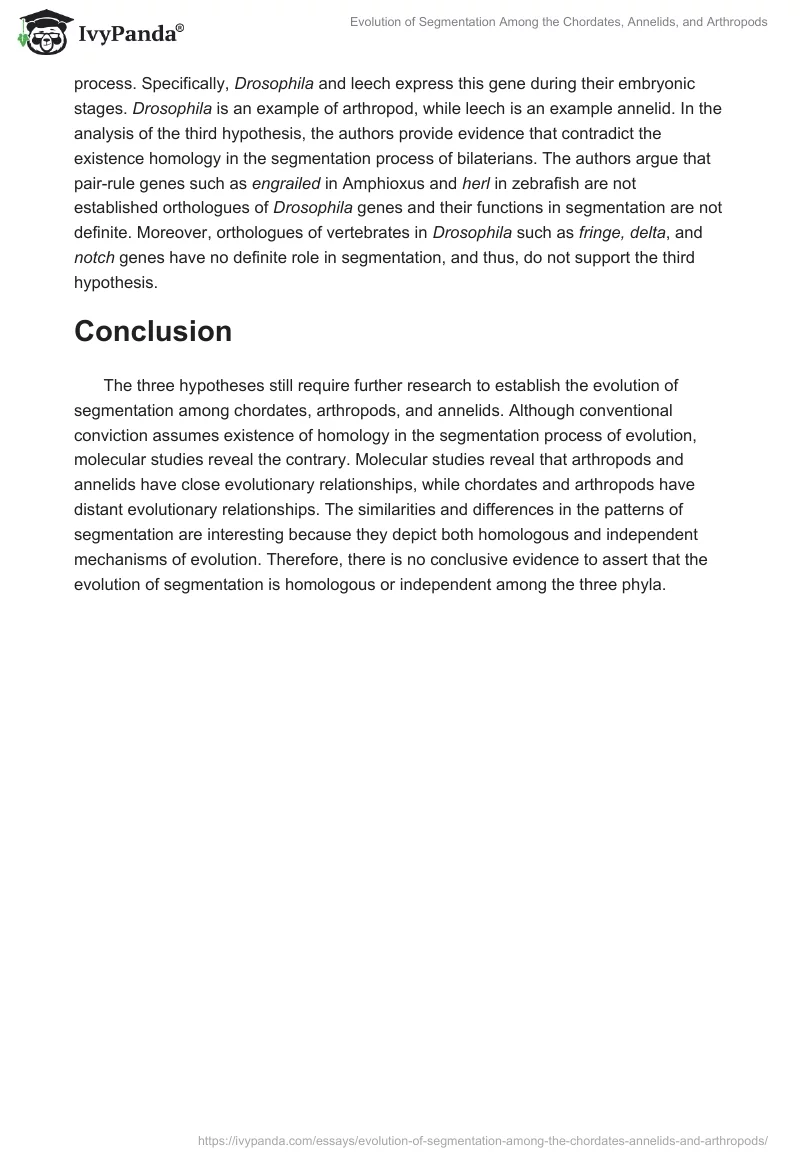Hypotheses
Three hypotheses explain the evolution of segmentation among the three phyla, namely, chordates, annelids, and arthropods. According to the first hypothesis, arthropods, chordates, and annelids exhibit independent mechanisms of segmentation. This hypothesis means that the evolution of segmentation in each of the three phyla is unique and has no any form of evolutionary relationships. The second hypothesis postulates that the evolution of segmentation among protostomes is dependent, while among chordates is independent. The hypothesis implies that protostomes have evolutionary relationships in segmentation, whereas chordates have evolved uniquely. In this case, the hypothesis means that annelids and arthropods have close evolutionary relationships, while chordates and arthropods have distant evolutionary relationships. The third hypothesis predicts that evolution of segmentation among bilaterians is the same. The hypothesis assumes that bilaterians originate from the same ancestor, but have evolved into different organisms with a related pattern of segmentation.
Evidence
In the first hypothesis, the authors present evidence that support the independence of segmentation in the three phyla, namely, chordates, arthropods, and annelids. The authors present molecular evidence, which shows that insects and non-insects have different mechanisms of segmentation. Comparative analysis of orthologous genes, such as pair-rule genes, indicates that the process of segmentation among arthropods is quite variable. As independent mechanisms of segmentation exist within the phyla, it is predictable that a considerable independence exists between phyla. Regarding the second hypothesis, the authors present evidence that support the dependent acquisition of segmentation among protostomes. The authors use molecular evidence, which shows that both arthropods and annelids express orthologous genes. Segment-polarity gene called engrailed is an orthologous gene that is responsible for the segmentation process. Specifically, Drosophila and leech express this gene during their embryonic stages. Drosophila is an example of arthropod, while leech is an example annelid. In the analysis of the third hypothesis, the authors provide evidence that contradict the existence homology in the segmentation process of bilaterians. The authors argue that pair-rule genes such as engrailed in Amphioxus and herl in zebrafish are not established orthologues of Drosophila genes and their functions in segmentation are not definite. Moreover, orthologues of vertebrates in Drosophila such as fringe, delta, and notch genes have no definite role in segmentation, and thus, do not support the third hypothesis.
Conclusion
The three hypotheses still require further research to establish the evolution of segmentation among chordates, arthropods, and annelids. Although conventional conviction assumes existence of homology in the segmentation process of evolution, molecular studies reveal the contrary. Molecular studies reveal that arthropods and annelids have close evolutionary relationships, while chordates and arthropods have distant evolutionary relationships. The similarities and differences in the patterns of segmentation are interesting because they depict both homologous and independent mechanisms of evolution. Therefore, there is no conclusive evidence to assert that the evolution of segmentation is homologous or independent among the three phyla.


